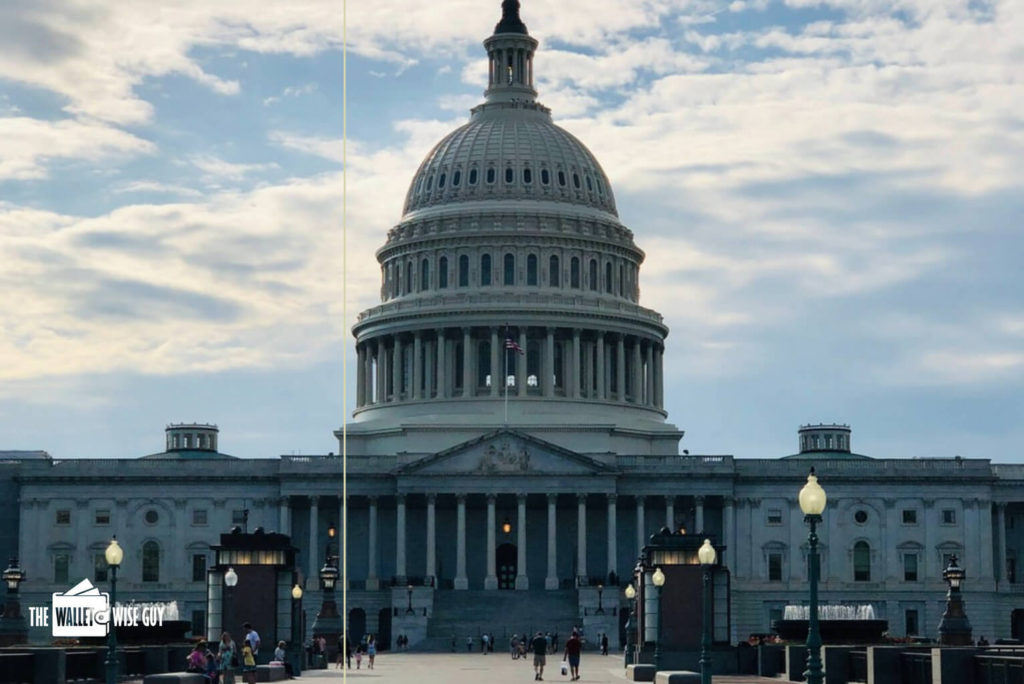At this point, it seems like the coronavirus has affected nearly every part of our lives. But no area may be more impacted than the student loan arena.
Ideas for student loan benefits have been discussed and discarded so quickly that it’s been hard to keep up. But now that both houses of Congress have passed the $2 trillion stimulus bill to help the economy recover from the COVID-19 crisis, it’s time for us to look at where it leaves the student loan landscape.
What You Need to Know About the Coronavirus Student Loan Stimulus
In short, if you have federal loans, the next six months are going to be really nice reprieve for you. But if you have private student loans, you aren’t going to get any help whatsoever. Here’s what you need to know.
1. Payments On Federal Student Loans Are Suspended for 6 Months.
That’s right, for the next 6 months, you aren’t required to make any payments toward your federal student loans. You may be thinking “But wasn’t it already possible to suspend payments by applying for forbearance?”
Yes, it was. But interest continues to accrue during a forbearance period. However, the new legislation that’s just been passed waives all student loan interest charges during the suspension period.
This means that all federal borrowers can pay $0 on their students loan until September without having their balance go up by even a cent.
2. Non-Payments Will Somehow Count as Payments Towards PSLF
This one is pretty crazy. Ok, so currently, Public Service Loan Forgiveness (PSLF) is the most generous student loan forgiveness plan available to U.S. student loan borrowers.
With PSLF, you only need to make 120 payments while working for a qualifying employer to have your entire remaining balance forgiven. But what’s astounding about this stimulus bill is that it will count these 6 months of non-payment as 6 months of payments towards PSLF.
So the rich just get richer with this bill. If you’re working towards PSLF, it now technically only takes 114 payments before you can qualify for forgiveness instead of 120.
3. Non-Payments Count Toward Income-Driven Repayment Forgiveness Too
If you’re currently on an Income-Driven Repayment (IDR) plan, you’ll qualify for student loan forgiveness after 20 to 25 years of payments, depending on the plan you choose and your loan type.
Once again, these next 6 months of payments will count as qualifying payments towards these IDR forgiveness plans. If you were on schedule to receive IDR forgiveness in January of 2030, that will still be your forgiveness date after these 6 months of non-payment have elapsed.
4. Private Student Loan Borrowers Are Left Out In the Cold
If you have private student loans, this stimulus bill doesn’t take you into consideration whatsoever. And that’s a real crime.
Private student loan borrowers are the ones who will be hurt the most during the coronavirus crisis.
Why? Because they don’t have access to Income-Driven Repayment (IDR) plans!
With federal student loans, unemployed borrowers can always join an IDR plan and lower their payments to $0. But not so for private student loan borrowers. Yet, they were completely disregarded by this stimulus bill.
What about federal student loan borrowers who refinanced their loans in February? Too bad, you can’t take advantage of these new benefits. It’s an absolute outrage that private student loan borrowers have been shafted when they really need the help the most.
This bill DOES provide funding to other private entities that need money during this crisis, like the airlines. Why not include a private lender reimbursement policy in this bill so that lenders could suspend borrower payments for 6 months without being financially harmed?
Note: These benefits don’t apply to federal loans made under the old FFEL program either.
Do NOT Refinance Your Federal Student Loans Right Now
Let me make this clear. No one should refinance their federal student loan for at least the next 6 months. There’s absolutely NO incentive to.
Even if you could land a great interest rate, you’re interest rate is already ZERO right now. Plus, if Congress decides to extend these benefits past September or add other goodies down the road, rest assured that private student loan borrowers will once again be left out of the fold.
Last week, I said that with interest rates dropping, it could still be a good time to refinance student loans. But now that these benefits have been extended so long, my advice has changed. In fact, I just removed my refinancing page from the menu bar of my site.
Here’s the thing. Once federal student loan borrowers have grown accustomed to not making payments, it’s going to be hard to ask them to start paying again. And you can rest assured that one or both presidential candidates are going to campaign on the idea that federal student loans should just be completely canceled.
If you have private student loans, refinance away! But, for everyone else, I say don’t you dare call a refinancing lender. Another student loan freebie could be just a few months away…unless you have private student loans.

